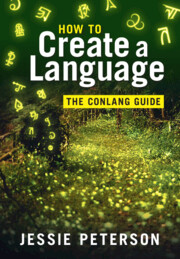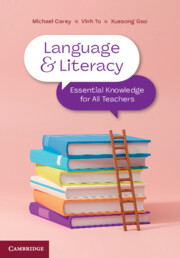Refine search
Actions for selected content:
155 results
2 - The Arts Faculty
- from Part I - Historical Context
-
-
- Book:
- The Origins of Scholasticism
- Published online:
- 18 November 2025
- Print publication:
- 08 January 2026, pp 55-88
-
- Chapter
- Export citation
4 - The Inaugurators of Scholasticism: Language and Theology in the Twelfth Century
- from Part I - Historical Context
-
-
- Book:
- The Origins of Scholasticism
- Published online:
- 18 November 2025
- Print publication:
- 08 January 2026, pp 116-154
-
- Chapter
- Export citation
7 - The Trinity
- from Part II - Theological Themes
-
-
- Book:
- The Origins of Scholasticism
- Published online:
- 18 November 2025
- Print publication:
- 08 January 2026, pp 208-236
-
- Chapter
- Export citation
TWO NOTIONS OF GRAMMATICAL CASE IN ARISTOTLE
-
- Journal:
- The Classical Quarterly , First View
- Published online by Cambridge University Press:
- 03 December 2025, pp. 1-12
-
- Article
-
- You have access
- Open access
- HTML
- Export citation

How to Create a Language
- The Conlang Guide
-
- Published online:
- 23 October 2025
- Print publication:
- 02 October 2025
-
- Textbook
- Export citation
18 - Recent Grammatical Change in English
- from Part II - Tracking Change in the History of English
-
-
- Book:
- The New Cambridge History of the English Language
- Published online:
- 23 October 2025
- Print publication:
- 23 October 2025, pp 505-535
-
- Chapter
- Export citation
13 - The Language of Dialect Writing
- from Part I - The Textual Record
-
-
- Book:
- The New Cambridge History of the English Language
- Published online:
- 18 October 2025
- Print publication:
- 16 October 2025, pp 326-356
-
- Chapter
- Export citation
Chapter 4 - Grammar, Categories, and the Structure of Experience
- from Part I - Linguistic Implications of Kant’s Thought
-
-
- Book:
- Kant on Language
- Published online:
- 19 September 2025
- Print publication:
- 09 October 2025, pp 67-82
-
- Chapter
- Export citation
Grammatical development of the native L1 in Cantonese–English bilingual children: early costs and long-term gains
-
- Journal:
- Bilingualism: Language and Cognition , First View
- Published online by Cambridge University Press:
- 26 August 2025, pp. 1-14
-
- Article
-
- You have access
- Open access
- HTML
- Export citation
Chapter 2 - Call the Grammar Police
- from Part I - Communicating in English
-
- Book:
- Lost in Automatic Translation
- Published online:
- 08 October 2025
- Print publication:
- 21 August 2025, pp 22-36
-
- Chapter
- Export citation
Chapter 12 - Practical Wisdom and the Rationality of Emotions
- from Conclusion
-
- Book:
- Attention to Virtues
- Published online:
- 25 July 2025
- Print publication:
- 14 August 2025, pp 299-318
-
- Chapter
- Export citation
30 - Grammar
- from Part VI - Language Skills and Areas
-
-
- Book:
- The Cambridge Handbook of Technology in Language Teaching and Learning
- Published online:
- 15 June 2025
- Print publication:
- 26 June 2025, pp 494-510
-
- Chapter
- Export citation
4 - How Do Children Learn Language?
- from Section I - The Early Years
-
- Book:
- Child Development
- Published online:
- 19 June 2025
- Print publication:
- 12 June 2025, pp 51-66
-
- Chapter
- Export citation
Chapter 4 - Grammar
- from Part 1 - Language and literacy fundamentals
-
-
- Book:
- Language and Literacy
- Published online:
- 29 May 2025
- Print publication:
- 12 June 2025, pp 71-109
-
- Chapter
- Export citation
Introduction
-
- Book:
- Language and Literacy
- Published online:
- 29 May 2025
- Print publication:
- 12 June 2025, pp 1-6
-
- Chapter
- Export citation

Language and Literacy
- Essential Knowledge for All Teachers
-
- Published online:
- 29 May 2025
- Print publication:
- 12 June 2025
-
- Textbook
- Export citation
Language Development Between 30 and 48 Months in Monolingual Slovenian-Speaking Children: A Study Using the Slovenian Adaptation of the Macarthur-Bates Communicative Development Inventory CDI–III
-
- Journal:
- Journal of Child Language , First View
- Published online by Cambridge University Press:
- 27 March 2025, pp. 1-17
-
- Article
-
- You have access
- Open access
- HTML
- Export citation
3 - Arabic Philology in Early Modern South Asia
-
- Book:
- Mobile Manuscripts
- Published online:
- 30 January 2025
- Print publication:
- 06 February 2025, pp 126-176
-
- Chapter
- Export citation
Semantic information boosts the acquisition of a novel grammatical system in different presentation formats
-
- Journal:
- Language and Cognition / Volume 17 / 2025
- Published online by Cambridge University Press:
- 28 January 2025, e30
-
- Article
-
- You have access
- Open access
- HTML
- Export citation
Chapter 1 - What Is Discourse?
-
- Book:
- Introducing Practical Discourse Analysis
- Published online:
- 20 December 2024
- Print publication:
- 09 January 2025, pp 1-42
-
- Chapter
- Export citation
